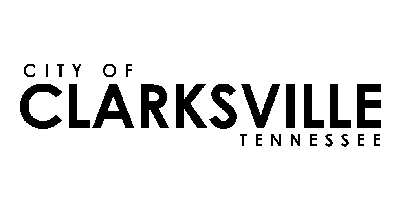-
Description
-
GENERAL STATEMENT OF JOB
This is the fourth of four levels in the Public Safety Communications series. Incumbents supervise the lower levels and plan, coordinate, and monitor all emergency communication systems and activities. Responsibilities may include approving all scheduled work hours; reviewing and approving personnel actions; developing and monitoring a budget; maintaining and purchasing emergency communication equipment; ensuring compliance with Federal and State regulations; and training emergency communication staff.
***PLEASE NOTE: THIS POSITION WILL REMAIN OPEN THROUGH SEPTEMBER 25, 2025, OR UNTIL FILLED.***
-
Example of Duties
-
SPECIFIC DUTIES AND RESPONSIBILITIES Essential Functions:
Manages staff to include prioritizing and assigning work; conducting performance evaluations; ensuring staff are trained; ensuring that employees follow policies and procedures; maintaining a healthy and safe working environment; and making hiring, termination, and disciplinary recommendations. Manages the activities of the Dispatch function, which includes implementing departmental policies and procedures, monitoring and revising staffing levels, coordinating training efforts, monitoring work for quality control, and identifying and implementing opportunities to improve services. Ensures compliance with Federal, State, and local laws, regulations, codes, and/or standards. Coordinates an on-going recruiting, hiring, and new hire training program which includes establishing processes; setting schedules; coordinating and monitoring training activities; and assessing the effectiveness of processes. Maintains and purchases emergency communications equipment, as necessary. Prepares operational and statistical reports. Prepares and manages a budget; forecasts staffing, equipment, material expenses, and anticipated revenue for budget planning; monitors and controls expenditures; and adjusts budget items as needed. Performs other duties of a similar nature or level.
-
Typical Qualifications
-
MINIMUM EDUCATION AND TRAINING
Education and Experience
Bachelor's degree in Communications, Public Management, Criminal Justice, or a related field. Five (5) years experience in emergency communications, including two (2) years supervisory experience. An equivalent combination of education and experience sufficient to successfully perform the essential duties of the job such as those listed above.
License and Certifications
National Incident Management System Certification. (Must be obtained within one year of hire.) Association of Public Safety Communication Officials (Public Safety Telecommunicator I & Fire) (Must be obtained within one year of hire.) Association of Public Safety Communication Officials (Telecommunicator I & Fire Service Instructor) (Must be obtained within one year of hire.) National Crime Information Center Certification (Must be obtained within one year of hire and must be at least twenty-one (21) years of age to obtain the certification.)
-
Supplemental Information
-
MINIMUM QUALIFICATIONS AND STANDARDS REQUIRED
Knowledge, Skills, and Abilities: Knowledge of:
Managerial principles. Customer service principles. Training principles and requirements. Two-way multi-frequency transceiver terminology, procedures, and techniques. Emergency communications facility operations, procedures, and standard policies. Departmental policies and standard operating procedures. Law enforcement, Fire Service, and emergency management operations. Budget principles. Applicable Federal, State, and local laws, rules, and regulations.
Skill in:
Monitoring and evaluating subordinates. Prioritizing and assigning work. Remaining calm in stressful situations. Providing customer service. Coordinating and evaluating training methods. Maintaining and purchasing applicable tools and equipment. Implementing policies and procedures. Ensuring compliance with applicable Federal, State, and local laws, rules, and regulations. Preparing and maintaining a budget. Communication, interpersonal skills as applied to interaction with subordinates, coworkers, supervisor, the public, etc. sufficient to exchange or convey information and to give and receive work direction.
Physical Requirements: The work is sedentary work which requires exerting up to 10 pounds of force occasionally and/or negligible amount of force frequently or constantly to lift, carry, push, pull or otherwise move objects, including the human body. Additionally, the following physical abilities are required:
Feeling: Perceiving attributes of objects, such as size, shape, temperature, or texture by touching with skin, particularly that of fingertips. Fingering: Picking, pinching, typing, or otherwise working, primarily with fingers rather than with the whole hand as in handling. Grasping: Applying pressure to an object with the fingers and palm. Handling: Picking, holding, or otherwise working, primarily with the whole hand. Hearing: Perceiving the nature of sounds at normal speaking levels with or without correction. Ability to receive detailed information through oral communication, and to make the discrimination sound. Kneeling: Bending legs at knee to come to a rest on knee or knees. Lifting: Raising objects from a lower to a higher position or moving objects horizontally from position-to-position. It occurs to a considerable degree and requires substantial use of upper extremities and back muscles. Mental Acuity: Making rational decisions through sound logic and deductive processes. Pulling: Using upper extremities to exert force to draw, haul or tug objects in a sustained motion. Pushing: Using upper extremities to press against something steady to thrust forward, downward, or outward. Reaching: Extending hand(s) and arm(s) in any direction. Repetitive Motion: Substantial movements (motions) of the wrist, hands, and/or fingers. Speaking: Expressing or exchanging ideas by means of the spoken word including the ability to convey detailed or important spoken instructions to other workers accurately and concisely. Standing: Particularly for sustained periods of time. Stooping: Bending body downward and forward by bending spine at the waist. It occurs to a considerable degree and requires full motion of the lower extremities and back muscles. Talking: Expressing or exchanging ideas by means of the spoken word including those activities in which they must convey detailed or important spoken instructions to other workers accurately, loudly, or quickly. Visual ability 1: sufficient to perform an activity like preparing and analyzing data and figures; transcribing; viewing a computer terminal; and/or extensive reading. Visual ability 4: sufficient to operate motor vehicles and/or heavy equipment, both day and night. Walking: Moving about on foot to accomplish tasks, particularly for long distances or move from one work site to another.
|
 City of Clarksville
City of Clarksville $63,628.00 - $95,441.00 Annually
$63,628.00 - $95,441.00 Annually
 please see the city of clarksville's benefits page for applicable benefits information.
please see the city of clarksville's benefits page for applicable benefits information.


 Sep 19, 2025
Sep 19, 2025 

